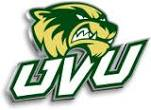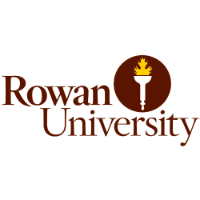What do they do?
Move or install mobile homes or prefabricated buildings.
Also known as:
Delivery Crew Worker, Mobile Home Installer, Mobile Home Laborer, Mobile Home Set-Up Person, Modular Set Crew Member, Set Up Technician
-
-17.6%
Change
Select a state to see its job growth rate ranking300Job Openings
Select a state to see its net job growth ranking
-
Wentworth Institute of Technology
Boston, MA
-
Pennsylvania College of Technology
Williamsport, PA
-
The University of Texas at San Antonio
San Antonio, TX
-
Rowan University
Glassboro, NJ
-
Washtenaw Community College
Ann Arbor, MI
Looking for colleges that offer a specific major? Use the College Match Tool to find your best-matched schools and discover your estimated Net Price!
- Doctorate or Professional Degree (<1%)
- Master's degree (1%)
- Bachelor's degree (9%)
- Associate's degree (10%)
- Some college, no degree (27%)
- High school diploma equivalent (39%)
- Less than high school diploma (13%)
People in this career often have these skills:
- Critical Thinking - Using logic and reasoning to identify the strengths and weaknesses of alternative solutions, conclusions, or approaches to problems.
- Operation and Control - Controlling operations of equipment or systems.
- Quality Control Analysis - Conducting tests and inspections of products, services, or processes to evaluate quality or performance.
- Operations Monitoring - Watching gauges, dials, or other indicators to make sure a machine is working properly.
- Monitoring - Monitoring/Assessing performance of yourself, other individuals, or organizations to make improvements or take corrective action.
- Coordination - Adjusting actions in relation to others' actions.
- Judgment and Decision Making - Considering the relative costs and benefits of potential actions to choose the most appropriate one.
- Active Listening - Giving full attention to what other people are saying, taking time to understand the points being made, asking questions as appropriate, and not interrupting at inappropriate times.
- Speaking - Talking to others to convey information effectively.
- Active Learning - Understanding the implications of new information for both current and future problem-solving and decision-making.
- Learning Strategies - Selecting and using training/instructional methods and procedures appropriate for the situation when learning or teaching new things.
- Complex Problem Solving - Identifying complex problems and reviewing related information to develop and evaluate options and implement solutions.
- Time Management - Managing one's own time and the time of others.
- Management of Personnel Resources - Motivating, developing, and directing people as they work, identifying the best people for the job.
People in this career often know a lot about:
- Building and Construction - Knowledge of materials, methods, and the tools involved in the construction or repair of houses, buildings, or other structures such as highways and roads.
- Public Safety and Security - Knowledge of relevant equipment, policies, procedures, and strategies to promote effective local, state, or national security operations for the protection of people, data, property, and institutions.
- Customer and Personal Service - Knowledge of principles and processes for providing customer and personal services. This includes customer needs assessment, meeting quality standards for services, and evaluation of customer satisfaction.
- Design - Knowledge of design techniques, tools, and principles involved in production of precision technical plans, blueprints, drawings, and models.
- Transportation - Knowledge of principles and methods for moving people or goods by air, rail, sea, or road, including the relative costs and benefits.
- Engineering and Technology - Knowledge of the practical application of engineering science and technology. This includes applying principles, techniques, procedures, and equipment to the design and production of various goods and services.
- Mathematics - Knowledge of arithmetic, algebra, geometry, calculus, statistics, and their applications.
- Mechanical - Knowledge of machines and tools, including their designs, uses, repair, and maintenance.
- Law and Government - Knowledge of laws, legal codes, court procedures, precedents, government regulations, executive orders, agency rules, and the democratic political process.
People in this career often have talent in:
- Multilimb Coordination - The ability to coordinate two or more limbs (for example, two arms, two legs, or one leg and one arm) while sitting, standing, or lying down. It does not involve performing the activities while the whole body is in motion.
- Control Precision - The ability to quickly and repeatedly adjust the controls of a machine or a vehicle to exact positions.
- Arm-Hand Steadiness - The ability to keep your hand and arm steady while moving your arm or while holding your arm and hand in one position.
- Manual Dexterity - The ability to quickly move your hand, your hand together with your arm, or your two hands to grasp, manipulate, or assemble objects.
- Problem Sensitivity - The ability to tell when something is wrong or is likely to go wrong. It does not involve solving the problem, only recognizing that there is a problem.
- Finger Dexterity - The ability to make precisely coordinated movements of the fingers of one or both hands to grasp, manipulate, or assemble very small objects.
- Reaction Time - The ability to quickly respond (with the hand, finger, or foot) to a signal (sound, light, picture) when it appears.
- Visualization - The ability to imagine how something will look after it is moved around or when its parts are moved or rearranged.
- Trunk Strength - The ability to use your abdominal and lower back muscles to support part of the body repeatedly or continuously over time without "giving out" or fatiguing.
- Near Vision - The ability to see details at close range (within a few feet of the observer).
- Static Strength - The ability to exert maximum muscle force to lift, push, pull, or carry objects.
- Extent Flexibility - The ability to bend, stretch, twist, or reach with your body, arms, and/or legs.
- Depth Perception - The ability to judge which of several objects is closer or farther away from you, or to judge the distance between you and an object.
- Oral Comprehension - The ability to listen to and understand information and ideas presented through spoken words and sentences.
- Response Orientation - The ability to choose quickly between two or more movements in response to two or more different signals (lights, sounds, pictures). It includes the speed with which the correct response is started with the hand, foot, or other body part.
- Stamina - The ability to exert yourself physically over long periods of time without getting winded or out of breath.
- Far Vision - The ability to see details at a distance.
- Oral Expression - The ability to communicate information and ideas in speaking so others will understand.
- Deductive Reasoning - The ability to apply general rules to specific problems to produce answers that make sense.
- Information Ordering - The ability to arrange things or actions in a certain order or pattern according to a specific rule or set of rules (e.g., patterns of numbers, letters, words, pictures, mathematical operations).
- Category Flexibility - The ability to generate or use different sets of rules for combining or grouping things in different ways.
- Wrist-Finger Speed - The ability to make fast, simple, repeated movements of the fingers, hands, and wrists.
- Gross Body Coordination - The ability to coordinate the movement of your arms, legs, and torso together when the whole body is in motion.
- Gross Body Equilibrium - The ability to keep or regain your body balance or stay upright when in an unstable position.
- Visual Color Discrimination - The ability to match or detect differences between colors, including shades of color and brightness.
- Speech Recognition - The ability to identify and understand the speech of another person.
People in this career often do these activities:
- Seal gaps or cracks to prevent leakage or moisture intrusion.
- Move large objects using heavy equipment.
- Install prefabricated or manufactured structures.
- Inspect systems to determine if they are operating properly.
- Test mechanical equipment to ensure proper functioning.
- Connect hoses to equipment or piping.
- Remove parts or components from equipment.
- Repair structural components.
- Estimate costs for labor or materials.
- Plan work procedures.
- Record information about parts, materials or repair procedures.
- Read work orders or descriptions of problems to determine repairs or modifications needed.
- Confer with customers or users to assess problems.
- Install home appliances.
- Reassemble equipment after repair.
- Repair pipes to stop leaking.
- Control power supply connections.
- Connect electrical components or equipment.
- Repair electrical circuits or wiring.
- Cut materials according to specifications or needs.
- Refinish wood or metal surfaces.
This page includes data from:

 Occupation statistics: USDOL U.S. Bureau of Labor Statistics Occupational Employment Statistics
Occupation statistics: USDOL U.S. Bureau of Labor Statistics Occupational Employment Statistics









